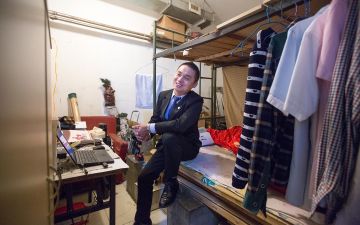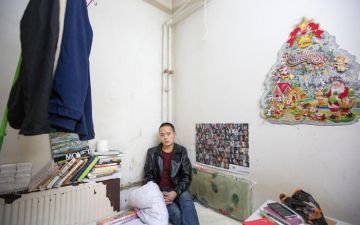“Rat Tribe” explores the lives of low-waged migrant workers who live in the catacombs of former nuclear bomb shelters and windowless rooms under Beijing's high-rises.
These waiters, karaoke hostesses, hairdressers, chefs, security guards, domestic workers and kitchen helpers are the backbone of Beijing’s service industry. In this city of 21 million where property prices have skyrocketed, underground housing is all many migrant workers can afford. But they have been unkindly dubbed the “rat tribe” for making a home in the basements.
Building on an earlier body of work, Sim Chi Yin and Ian Johnson are making a new series of portraits of the migrants in their tiny rooms – by turn cosy and meticulously-decorated, to tatty and dank – showing them to be hard-working people, with diverse backgrounds and stories, but all with aspirations to social mobility.
In the two years since Sim and Johnson last reported on them, their housing predicament has become more uncertain. The Beijing authorities have announced that they will close down the basement dwellings, citing safety concerns. The closures are on-going.



